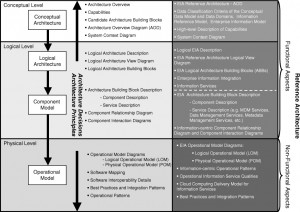- Lying to the boss
- What is a Business Strategy?
- What is a Corporate Strategy?
- What is a Product-Market Strategy?
- What is a Business Unit Strategy?
- What is CRM?
- What is Architecture?
- What is Enterprise Information Architecture?
- What is Strategic Design?
- What are business benefits and value?
- What is DevOps?
- What is Cloud Computing?
- What is a Banking Multi-Channel Architecture?
- What is Gamification?
- What is Crowdsourcing?
- What is a Segment Strategy?
- What is a Business Model?
- What is an Operating Model?
- What is a Target Operating Model (TOM)
- What are Strategic Guiding Principles?
- What is Service Design?
- What is a Customer Archetype?
- What are Digital Natives and Digital Immigrants?
- What is technology-driven change?
- What is a Digital Footprint?
- What is a Potential Trend?
- What are Cloud Standards?
- What is VisaNet?
- What is User Context?
- What are IBM CCRA and CCMP?
- What is PCI DSS Compliance?
I am happy to say that is was NOT ME that complicated “Architecture”.
One thing that makes it complicated and confusing is that we describe the various dimensions of architecture with some ambiguous words. Architecture is made up of different viewpoints that require different skill sets to tackle properly.
The least confusing dimension focuses on different aspects of systems such as applications (requirements about what you want the system to do), information (requirements about what you want the system to process or store), integration, business, etc. So we have Application Architects, Information Architects, Integration Architects, Business Architects, etc.
 Architects within one of the above specialties then focus on different levels of abstraction. Think of it as levels of knowing what you are talking about. If you have very little idea of what you are talking about then you use vague words like “gather customer behavior” to create a Conceptual Architecture. Then, once you have kind of narrowed it down, but not quite, you use more specific words such as “Web Analytics” to create a Logical Architecture. Then, once you know exactly what you mean you use concrete words such as “Core Metrics” or “Tea Leaf” to say exactly what you mean.
Architects within one of the above specialties then focus on different levels of abstraction. Think of it as levels of knowing what you are talking about. If you have very little idea of what you are talking about then you use vague words like “gather customer behavior” to create a Conceptual Architecture. Then, once you have kind of narrowed it down, but not quite, you use more specific words such as “Web Analytics” to create a Logical Architecture. Then, once you know exactly what you mean you use concrete words such as “Core Metrics” or “Tea Leaf” to say exactly what you mean.
Finally, we have different levels of detail. Application Architects understand the components that make up an application or system. Solution Architects understand the building blocks that solve a problem, usually involving a small cluster of applications that are integrated together. Enterprise Architects understand all of the major systems that solve the biggest problems for an organization (business unit, corporation, etc.).
Now, if I say the Information Architecture of a teller application is part of the Architecture of the teller application, part of the Solution Architecture of the branch solution, and part of the Enterprise Information Architecture (and therefore part of the Enterprise Architecture) then you will know exactly what I mean. Right?
Of course, software makes up a layer in yet another dimension including software, platforms, and infrastructure (hardware, networks, OS, DBMS, etc.)
Lying orthogonally across the above categories there are specialties such as CRM, marketing, security, channels, etc.
Pingback: What is Enterprise Information Architecture? | Alan Street
Pingback: Where am I going with this? | Alan Street